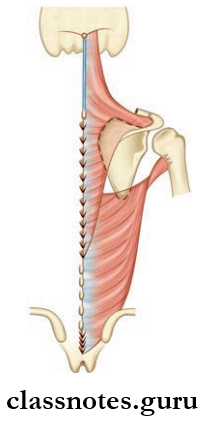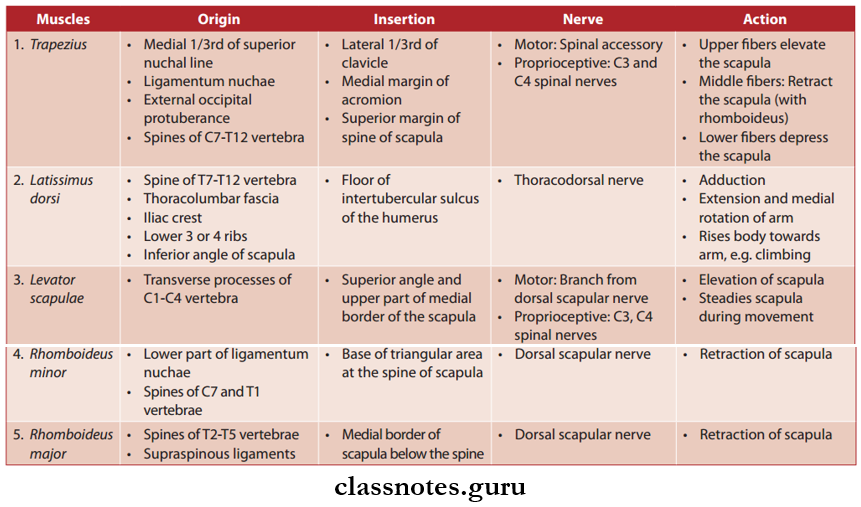Back Of The Body Question And Answers
Question 1. Briefly mention the skin and fascia of the back.
Answer:
- As the man lies on his back, the skin is thick and strong in the back and is tied to the underlying fascia.
- The superficial fascia of the back is also thick and strong.
Fascia of the Back
- Cutaneous nerves
- Fat
- Cutaneous arteries and veins
- The deep fascia is dense in texture.
Read And Learn More: Upper Limb
Question 2. Enumerate and write about the origin, insertion, nerve supply, and actions of the muscles connecting the upper limb with the vertebral column.
Answer:
- The upper limb is connected to the back of the trunk by several muscles
- These muscles are called posterior axioappendicular muscles.
- They are:
- Trapezius
- Latissimus dorsi
- Levator scapulae
- Rhomboideus minor
- rhomboideus major

Fascia of the Back Muscles and Nerves
Upper Limb With The Vertebral Column Clinical Anatomy
- Paralysis of the trapezius muscle causes drooping of the shoulder which should be differentiated from a collapsed lung as both can be mistaken for each other.
- A small triangular area of auscultation is present in the back near the inferior angle of the scapula.
- It is bounded by:
- Superior horizontal border of latissimus dorsi
- The inferior border of the trapezius
- The floor is formed by the 6th and 7th intercostal spaces, the seventh rib, and the rhomboideus major
- This area is not covered by big muscles. So the underlying upper part of the lower lobe can be auscultated through this area.
- Due to the peculiar feature of latissimus muscle, it can be conditioned and used as an autotransplant to repair a surgically removed portion of the heart.
Thoracolumbar Fascia

Back Of The Body Multiple Choice Questions
Question 1. Which of the following can extend, adduct, and medially rotate the arm?
- Teres minor
- Subscapularis
- Latissimus dorsi
- Deltoid
Answer: 3. Latissimus dorsi
Question 2. All of the listed actions are of the trapezius except:
- Elevation of the scapula
- Retraction of the scapula
- Depress the scapula
- None of them
Answer: 4. None of them
Question 3. All of the listed actions are of the latissimus dorsi except:
- Adduction
- Extension and medial rotation of the arm
- Helps to climb
- None among them
Answer: 4. None among them
Back Fascia Anatomy
Question 4. Paralysis of which muscle causes the drooping of the shoulder?
- rhomboideus major
- Rhomboideus minor
- Trapezius
- Serratus anterior
Answer: 3. Trapezius
Question 5. Which muscle can be used as an autotransplant?
- Rhomboideus minor
- Trapezius
- Serratus anterior
- Latissimus dorsi
Answer: 4. Latissimus dorsi
